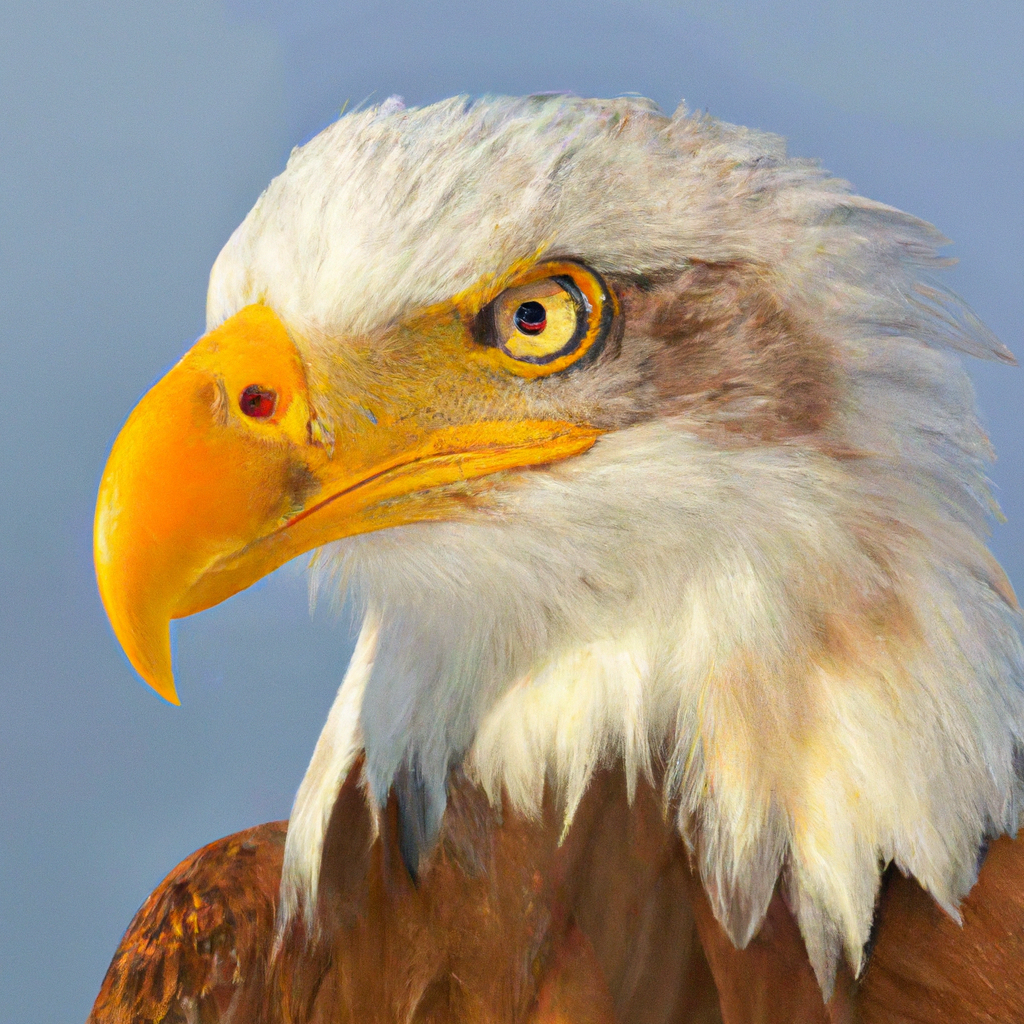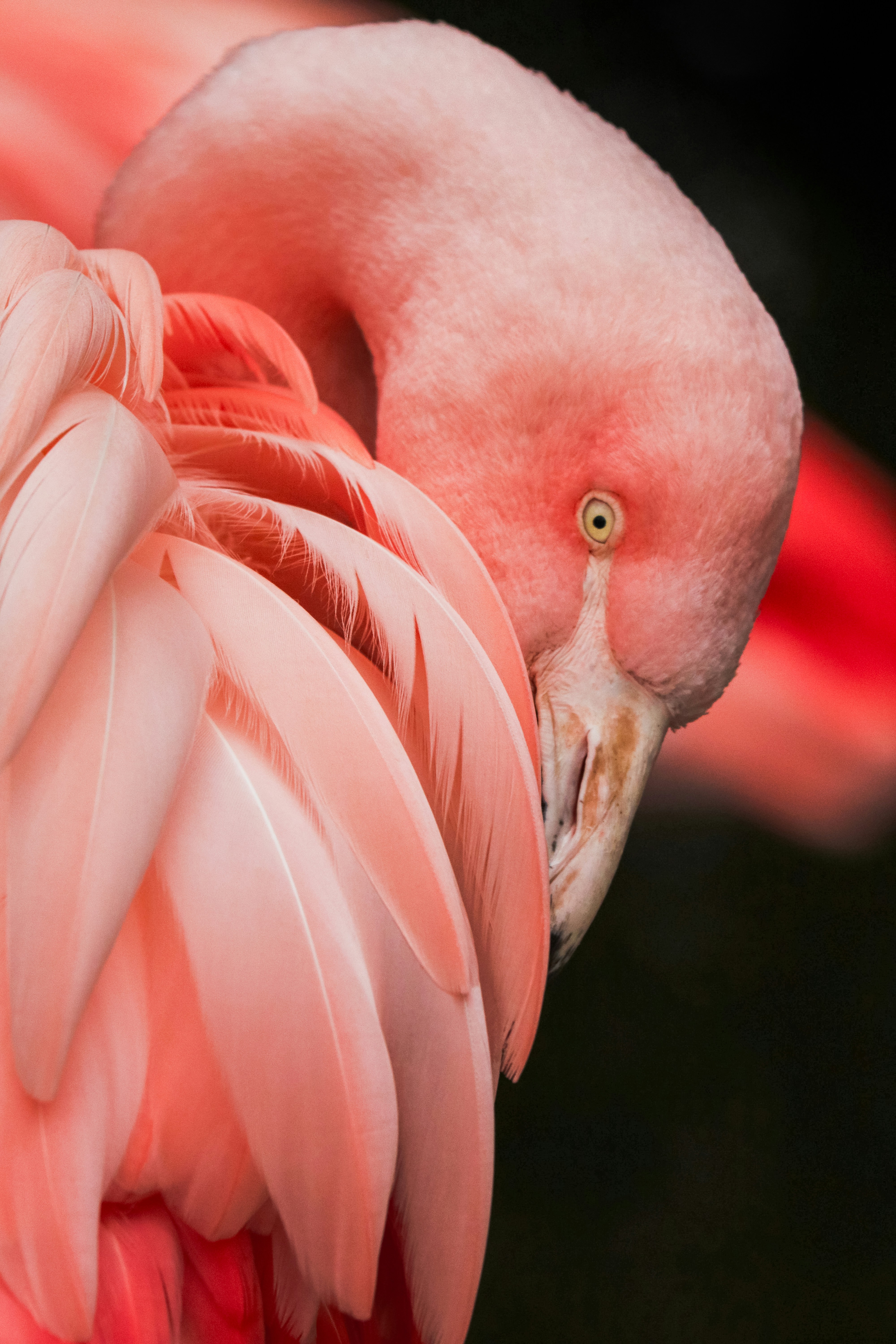Imagine soaring through the sky, high above the world, with the sharp vision of an eagle. Have you ever wondered just how far these majestic birds can see? In this article, we will explore the incredible visual prowess of eagles and unravel the mystery behind their remarkable sight. From their astonishing ability to spot their prey from great distances to their unique adaptations that give them an edge over other birds, get ready to gain a whole new appreciation for the awe-inspiring vision of the eagle.
Physical Characteristics of Eagles
This image is property of images.unsplash.com.
Size and Wingspan
Eagles are known for their impressive size and wingspan. They are one of the largest birds of prey, with the bald eagle being the largest eagle species in North America. On average, eagles can measure around 2 to 3 feet in length and have a wingspan ranging from 6 to 8 feet. These large physical attributes enable eagles to soar through the skies with grace and power, making them formidable hunters.
Keen Eyesight
One of the most remarkable features of eagles is their exceptional eyesight. It is often said that eagles have eyes like a hawk, and for good reason. Eagles possess incredibly sharp and highly focused vision, which allows them to spot prey from great distances. Their eyes are much larger than those of humans and contain a high concentration of light-detecting cells called cones, responsible for sharp vision. This keen eyesight is crucial for their hunting success.
Color Vision
In addition to their excellent visual acuity, eagles also have impressive color vision. While humans have three types of color receptors (red, green, and blue), eagles possess an additional receptor that enables them to see ultraviolet light. This unique ability allows eagles to perceive a wider range of colors and detect subtle differences in prey or their surrounding environment. It gives them a significant advantage when it comes to hunting and survival.
Factors Affecting Eagle Vision
Atmospheric Conditions
Eagles are highly adaptable when it comes to visual perception, but atmospheric conditions can still affect their vision. For instance, during foggy or hazy weather, their vision might be compromised due to decreased visibility. Similarly, heavy rain or snowfall can also impair their ability to see clearly. However, eagles are known for their ability to maneuver through various conditions and adjust their hunting strategies accordingly.
Altitude and Angle
Another factor that affects eagle vision is altitude and viewing angle. When soaring at high altitudes, eagles have a broader perspective of the landscape, allowing them to spot potential prey from a greater distance. Additionally, the angle at which they view their surroundings plays a role in their overall visual acuity. By scanning the terrain from different angles, eagles can identify prey hidden in vegetation or camouflaged within their environment.
Prey Movement
The movement of prey can also impact an eagle’s vision. Eagles are adept at tracking moving objects, especially those that exhibit rapid or erratic movements. Their exceptional visual processing capabilities enable them to lock onto prey even while it’s in motion, allowing them to anticipate the trajectory and intercept it effectively. This ability to perceive and predict prey movement is crucial for their successful hunting endeavors.
Types of Eagles
Bald Eagle
The bald eagle, with its striking white head and dark brown body, is an iconic symbol of strength and beauty. Found primarily in North America, this majestic bird is known for its impressive wingspan and keen eyesight. It is often found near bodies of water, where it hunts for fish and waterfowl.
Golden Eagle
The golden eagle is one of the most widespread eagle species, found across the Northern Hemisphere. It possesses a stunning golden-brown plumage and a powerful build. Golden eagles are skilled hunters, preying on a variety of mammals, birds, and reptiles. They have a remarkable visual acuity that allows them to hunt in open landscapes with precision.
This image is property of images.unsplash.com.
American Kestrel
While not an eagle in the strictest sense, the American kestrel is a small falcon often referred to as a “miniature eagle.” Despite its diminutive size, the American kestrel possesses remarkable visual capabilities. With its keen eyesight and ability to hover in mid-air, it can spot and capture small rodents and insects on the ground.
Harpy Eagle
The harpy eagle is one of the largest and most powerful eagles in the world. Known for its distinctive crest of feathers and piercing gaze, this species inhabits the rainforests of Central and South America. Harpy eagles have incredible vision, enabling them to spot and ambush prey, including monkeys and sloths, within the dense canopy.
Martial Eagle
The martial eagle, native to sub-Saharan Africa, is renowned for its immense size and strength. It is the largest eagle in Africa and possesses powerful talons for capturing and killing prey. With its exceptional vision, the martial eagle can spot small mammals and birds from great distances, making it a formidable hunter in its habitat.
Visual Acuity of Eagles
Spatial Resolution
Eagles have incredible spatial resolution, allowing them to discern fine details with impressive clarity. Their eyes have a higher density of photoreceptor cells, enabling them to perceive intricate patterns, textures, and movements even from a significant distance. This spatial resolution is vital for identifying prey, locating potential threats, and navigating their surroundings with precision.
Perception of Detail
The perception of detail is another remarkable aspect of eagle vision. Not only can they see objects from far away, but they can also discern minute details that may go unnoticed by human eyes. From the intricacies of feathers to subtle changes in vegetation, eagles can detect and process fine details, giving them an advantage when it comes to hunting and survival in their natural habitats.
Visual Field Size
Eagles have an impressive visual field size, allowing them to have a wide-angle view of their surroundings. This wide field of vision enables them to monitor a larger area, making it easier to spot potential prey, predators, or other relevant factors in their environment. With their visual field size, eagles can maintain constant surveillance and respond quickly to any stimuli that may affect their survival.
Eagle’s Range of Vision
Visual Field Angle
The visual field angle of eagles is much wider than that of humans. While humans have a field of view of approximately 180 degrees, eagles have a field of view that can range from 220 to 270 degrees, depending on the species. This wider visual field angle allows eagles to monitor a larger area without needing to turn their heads extensively, giving them an edge in detecting both prey and potential threats.
Distance Definition
Eagles have the ability to see objects with remarkable clarity over great distances. While humans may struggle to recognize details beyond a certain distance, eagles can maintain visual acuity much farther. This long-distance vision allows them to locate prey, potential mates, or rivals, ensuring their survival in vast and diverse habitats.

Examples of Long-Distance Sight
To put the extraordinary long-distance sight of eagles into perspective, imagine being able to spot a small animal from a mile away or identify a fish swimming beneath the surface of a lake from hundreds of feet above. These are the types of long-distance sightings that eagles are capable of, showcasing their unparalleled visual acuity and the unique advantage it provides in their hunting strategies.
Eagle Vision vs. Human Vision
Visual Clarity
When it comes to visual clarity, eagles outperform humans by a significant margin. While humans have relatively good vision, eagles possess much higher spatial resolution and clearer image perception. This enhanced visual clarity allows eagles to detect fine details, recognize prey from afar, and navigate their environment with precision that surpasses human capabilities.
Color Perception
Color perception is another area where eagles excel. While humans can perceive a broad spectrum of colors, eagles have an additional color receptor that allows them to see ultraviolet light. This ultraviolet perception provides them with a more nuanced understanding of their surroundings. By detecting ultraviolet cues, such as changes in vegetation or disturbances, eagles can gain critical insights that might go unnoticed by humans.
Field of View
The field of view is where humans have a slight advantage over eagles. While eagles have a wider visual field angle, humans have a slightly larger overall field of view due to the placement of their eyes. However, the difference is negligible compared to the other visual capabilities that eagles possess. The exceptional visual acuity and clarity of eagles far outweigh any limitations in their field of view.
Eagles’ Hunting Techniques

Scanning the Terrain
Eagles are meticulous observers, scanning the terrain below them with precision. With their exceptional eyesight, they can identify potential prey, such as small animals or fish, even from great heights. By scanning the terrain systematically, they can pinpoint areas with higher prey concentrations or detect any movement that may indicate the presence of prey.
Spotting Prey from Above
One of the key hunting techniques employed by eagles is spotting prey from above. Perched on a high vantage point or soaring through the sky, eagles use their keen eyesight to identify potential targets. Their visual acuity allows them to spot even small movements or specific colorations that indicate the presence of prey. Once a potential meal is detected, eagles can quickly dive or swoop down for the capture.
Zooming in on Potential Targets
When an eagle spots a potential prey item, it can zoom in on the target with impressive precision and focus. By narrowing its visual attention and adjusting its trajectory, an eagle can maintain a clear line of sight and approach its prey with accuracy. This ability to quickly assess and lock onto a target is a testament to the exceptional visual capabilities and hunting prowess of these magnificent birds.
Impressive Prey Sightings by Eagles
Diving for Fish
Eagles are known for their spectacular hunting displays, particularly when it comes to diving for fish. With their exceptional vision and precise depth perception, they can spot fish swimming beneath the water’s surface from considerable heights. Once the target is locked, the eagle plunges into the water, using its powerful talons to snatch the fish from its aquatic domain. This fishing technique showcases the remarkable visual acuity and hunting precision of eagles.
Spotting Small Mammals
Eagles also have the ability to spot small mammals, such as rabbits or rodents, from impressive distances. Perched on a high vantage point or soaring through the skies, they can detect even subtle movements or colorations that indicate the presence of potential prey. Once a target is identified, they can engage in a swift and precise descent to capture their meal, relying on their exceptional vision to guide them throughout the process.
Identifying Camouflaged Prey
Camouflaged prey can pose a challenge for many predators, but not for eagles. With their heightened visual acuity and perception of detail, eagles can detect camouflaged prey even in complex environments. By discerning slight variations in color, texture, or movement patterns, they can identify hidden prey and adapt their hunting strategies accordingly. This ability to locate well-camouflaged prey is a testament to the incredible visual capabilities possessed by eagles.
Eagle Vision Research and Studies
Scientific Experiments
Researchers have conducted various scientific experiments to better understand and appreciate the visual capabilities of eagles. These experiments often involve testing the birds’ visual acuity, depth perception, or color perception using specially designed apparatus or simulated hunting scenarios. By studying the visual responses and behavior of eagles, scientists can gain valuable insights into their vision and how it contributes to their hunting success.
Tracking and Telemetry
Tracking studies using advanced telemetry technology have also provided valuable information about eagle vision. By attaching small tracking devices to eagles, researchers can monitor their movement patterns, foraging behavior, and visual attention. This data, combined with environmental variables, helps paint a comprehensive picture of how eagles utilize their vision in different hunting situations and habitats.
Observations in the Field
Close observations of eagles in their natural habitats have also contributed to our understanding of their visual acuity. Researchers spend long hours observing and documenting eagles’ hunting techniques, prey selection, and visual strategies. By closely analyzing these observations, scientists can reveal valuable insights about the unique visual capabilities of eagles and how they adapt their vision to their specific hunting requirements.
Limitations to Eagle Vision
Poor Visibility Conditions
Despite their exceptional visual capabilities, eagles still face limitations when it comes to poor visibility conditions. Dense fog, heavy rain, or dim lighting can all hinder their ability to see clearly and detect prey or other relevant stimuli. In such conditions, eagles may rely more on other sensory cues or alternative hunting strategies to ensure their survival and hunting success.
Obstructed Line of Sight
An obstructed line of sight can also pose challenges for eagles. Thick vegetation, rock formations, or tall buildings can obstruct their view, making it difficult for them to locate prey or potential threats. In such situations, eagles may need to rely on their other senses or adjust their hunting techniques to adapt to the limitations imposed by their surroundings.
Impairments and Aging
Just like humans, eagles can experience impairments and vision loss as they age. Cataracts or other age-related eye conditions may reduce their visual capabilities, making it more challenging for them to hunt effectively. However, eagles have shown remarkable adaptability, and their hunting techniques often compensate for any visual impairments they may experience.
In conclusion, eagles possess remarkable physical characteristics and visual abilities that make them formidable hunters. With their size, wingspan, keen eyesight, and color vision, they are perfectly adapted to their hunting environments. Factors such as atmospheric conditions, altitude, and prey movement can influence their vision, but eagles are highly adaptable and can navigate through various challenges. The different types of eagles, including the bald eagle, golden eagle, American kestrel, harpy eagle, and martial eagle, each have their unique visual capabilities and hunting strategies. Their spatial resolution, perception of detail, and visual field size contribute to their exceptional vision. Eagles have an impressive range of vision, enabling them to see with remarkable clarity over great distances. Their hunting techniques, such as scanning the terrain, spotting prey from above, and zooming in on potential targets, showcase their incredible visual acuity and precision. Eagles have been observed demonstrating impressive prey sightings, such as diving for fish, spotting small mammals, and identifying camouflaged prey. Scientific research, tracking studies, and field observations further contribute to our understanding of eagle vision. Despite their exceptional abilities, eagles still face limitations in poor visibility conditions, obstructed line of sight, and impairments associated with aging. Overall, the visual capabilities of eagles far surpass human vision, offering a fascinating glimpse into the world through an eagle’s eyes.


